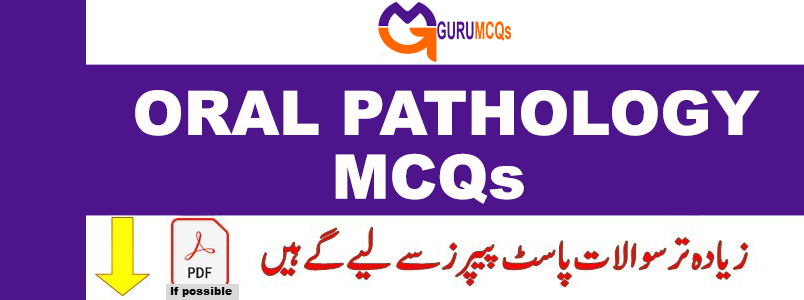
The mouth, being a vital organ with diverse functions, is subject to various diseases falling under the domain of oral pathology. This field encompasses the study of diseases affecting the mouth, jaws, and associated structures like salivary glands, facial muscles, temporomandibular joints, and perioral skin. Oral pathology, as a specialized discipline, focuses on diagnosing and investigating the causes and effects of diseases impacting the oral and maxillofacial region. For a thorough and objective assessment of students’ critical thinking abilities, multiple-choice questions (MCQs) serve as the preferred format. Gurumcqs.com offers a comprehensive collection of 2000+ oral pathology MCQs with answers and detailed explanations. These MCQs are carefully selected from reputable and trusted reference books on oral pathology. They prove beneficial for interview preparation, entrance examinations, competitive exams, and certifications, catering to individuals with varying levels of experience, including both seasoned professionals and newcomers. Additionally, you can explore MCQs on Oral Anatomy on this platform.
1. Warthins tumor is_____________?
A. An adenolymphoma of the parotid gland
B. A pleomorphic adenoma of parotid gland
C. Carcinoma of the parotid gland
D. None of the above
2. The common site for narcotizing sialometaplasia____________?
A. cheeks
B. dorsum of tongue
C. palate
D. gingival
3. In the clinical evaluation, the most significant, finding of the parotid mass may be accompanying_____________?
A. Rapid progressive painless enlargement
B. Nodular consistency
C. Supramental and preauricular lymphadenopathy
D. Facial paralysis
4. Salivary gland aplasia is seen in_________________?
A. Hemifacial microstomia
B. LADD syndrome
C. Mandibulo-facial dysostosis (Treacher Collins)
D. All of the above
5. All of the following is the extraglandular manifestation of primary sjogren’s syndrome except________________?
A. Raynaud’s phenomena
B. Arthritis
C. Lymphadenopathy
D. Thrombocytopenia
6. “Xerostomia” is seen in all of the following EXCEPT in_______________?
A. Anticholinergic drugs
B. Dehydration
C. Sjogren’s syndrome
D. Oral sepsis
7. Commonest salivary gland tumour in children______________?
A. Lymphoma
B. Pleomorphic adenoma
C. Adenoid cystic carcinoma
D. Mucoepidermoid carcinoma
8. Spindle cell carinoma is a variant of_____________?
A. Pleomorphic Adenoma
B. Adenoid cystic carcinoma
C. Basal cell carcinoma
D. Squamous cell carcinoma
9. Commonest site for ectopic salivary gland tumour is_______________?
A. Tongue
B. Cheek
C. Palate
D. Neck
10. Chemical mumps’ is synonymous with_____________?
A. Epidemic parotitis
B. Iodine mumps
C. Nutritional mumps
D. Nonspecific mumps

Pingback: Oral Histology MCQs Questions for Test and Exam Preparation | GURU MCQS
I was recommended this website by my cousin. I’m not sure whether this post is written by him as nobody else
know suc detailed about my difficulty. You are wonderful!
Thanks! https://www.waste-ndc.pro/community/profile/tressa79906983/
I was recommended tthis webnsite by my cousin. I’m not suure whether this post is written by
him as nobody else know such detailed about myy difficulty.
You are wonderful! Thanks! https://www.waste-ndc.pro/community/profile/tressa79906983/